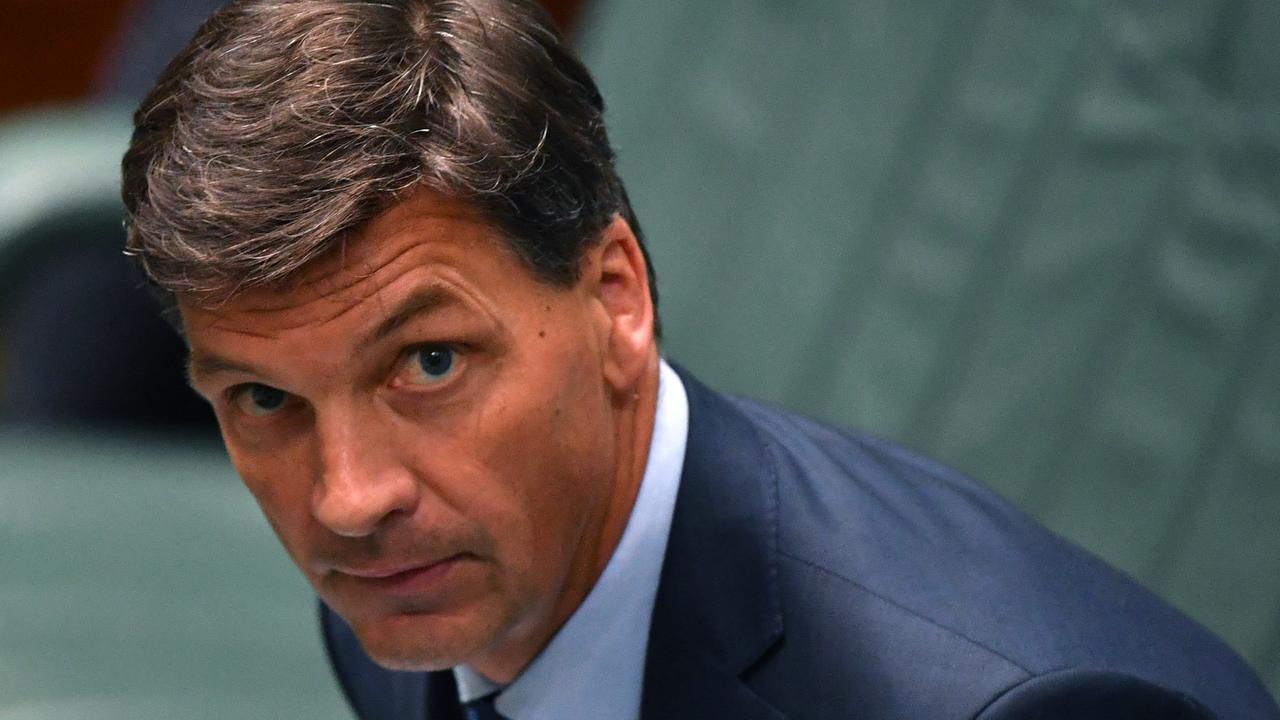Newspoll: Malcolm Turnbull axed as Coalition closed the gap on Labor
Malcolm Turnbull was beginning to drag the Coalition back into contention in the final weeks of his leadership.
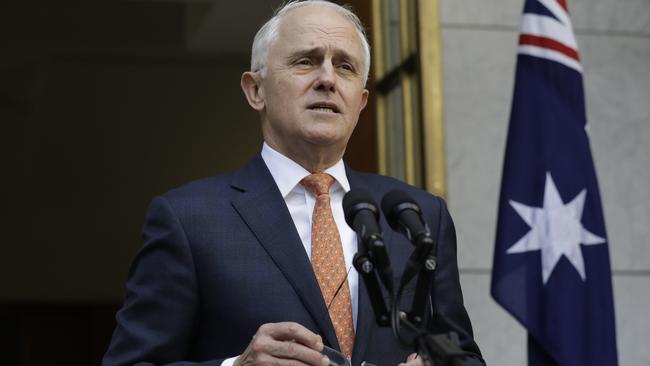
Malcolm Turnbull was beginning to drag the Coalition back into contention in the final weeks of his leadership and had stretched his lead over Bill Shorten as preferred prime minister to the widest average margin in more than a year.
However, the former prime minister was still on track for a significant defeat and the potential loss of 13 marginal seats, with large swings against the government still being recorded in Queensland.
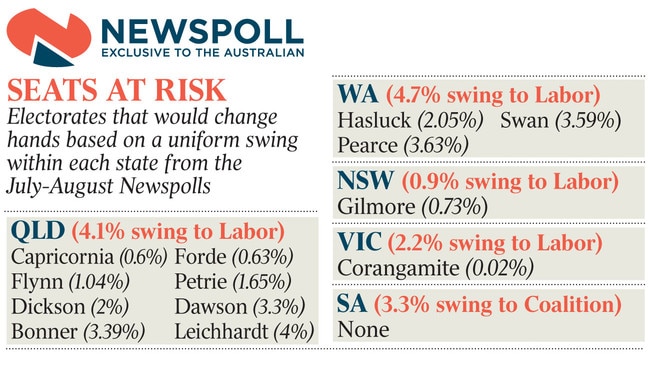
A Newspoll analysis of Mr Turnbull’s last month in office shows the Coalition lifting or holding its ground in every mainland state except Victoria, but this had come from a low base as the government crashed soon after the 2016 election.
The analysis of polls taken between July 12 and August 12 shows the Coalition was slowly regaining territory in the key battleground state of Queensland with a two-point lift in the primary vote to 38 per cent, marking the highest average result in more than a year and translating to a 50-50 two-party split.
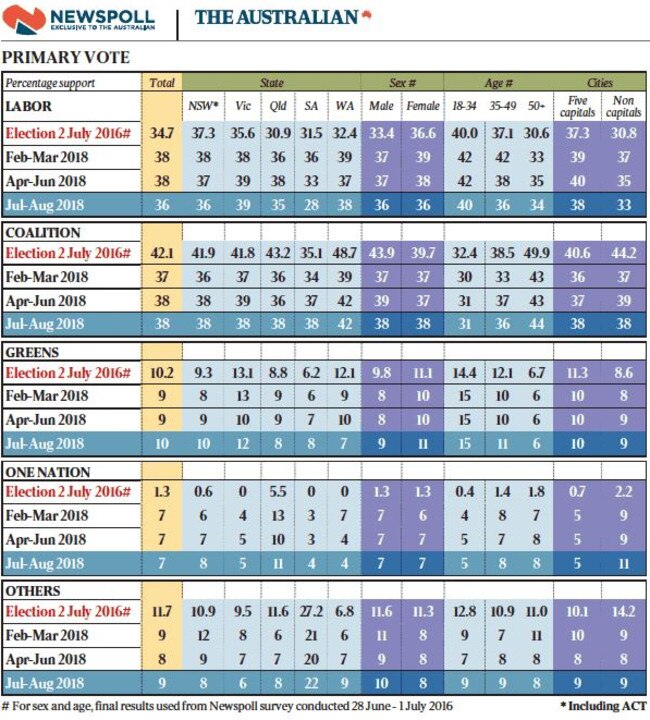
This represented only a partial recovery, with the LNP still facing a 4 per cent swing against it on the 2016 election results. This would represent the loss of eight seats: Capricornia, Forde, Flynn, Petrie, Dickson, Dawson, Bonner and Leichhardt.
In Western Australia, where the Coalition was also still facing a 4.7 per cent swing against it, three seats were at risk: Hasluck, Swan and Pearce.
In Victoria the government would suffer a 2.2 per cent swing with the loss of Corangamite, while NSW was holding firm for the Coalition with only a 0.9 per cent swing and the loss of one seat — the south coast seat of Gilmore.
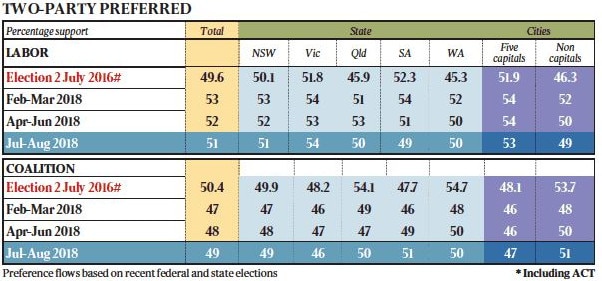
South Australia was the stand- out state where the Liberal Party recorded a 3.3 per swing towards it. However, South Australia has the fewest seats of all the mainland states — only 10 electorates at the next election, none of them a marginal Labor seat.
While the Coalition still trailed Labor on the two-party-preferred vote nationally, the average split of 49-51 for the period between July 12 and August 12 was higher than the results for the five Newspoll quarterly state-by-state breakdowns that preceded it, dating back to April 2017.
The Coalition’s low point was 47-53 in the first quarter of this year.
The exclusive analysis of Newspolls averages for the past 15 months, conducted for The Australian, follows a horror start for new Prime Minister Scott Morrison, with voters punishing the Coalition for last week’s leadership turmoil.
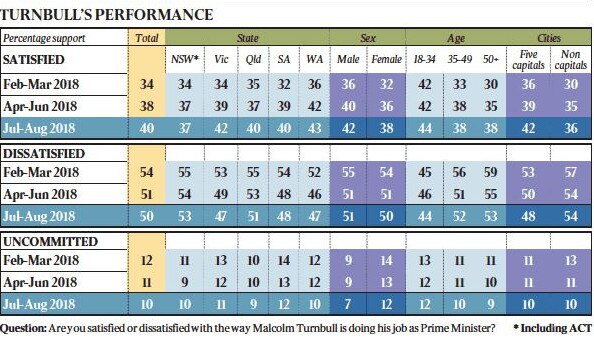
The weekend poll showed the party’s primary vote plunging to the equal second-lowest level in a decade, 33 per cent, and Bill Shorten regaining the mantle as the preferred prime minister for the first time since February 2015.
The plunge in the Coalition’s two-party-preferred vote to 44 per cent could strip more than 26 seats from the government
The new analysis of Mr Turnbull’s last period of government shows the Coalition was slowly gaining ground on Labor from a national perspective.
For Mr Turnbull personally, the results showed his standing with voters improving, despite the government being paralysed by an internal feud over the national energy guarantee, while the Labor leader’s personal ratings fell to the lowest in more than a year.
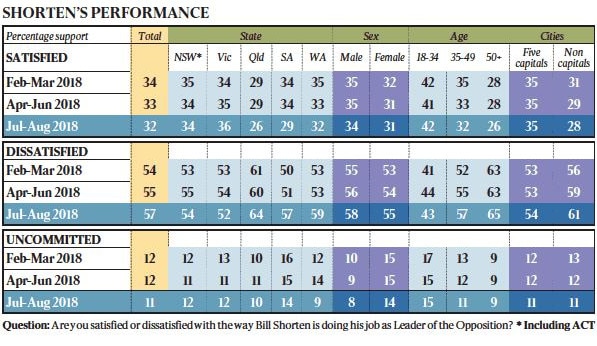
Satisfaction with Mr Turnbull’s performance was the highest of the quarterly periods of the past year at 40 per cent. When dissatisfaction was taken into account, Mr Turnbull ended up with a net negative approval rating of minus 10.
Mr Shorten’s approval ratings, on the other hand, had blown out to minus 25.
Mr Turnbull also enjoyed his largest margin, 17 points, over the Opposition Leader as the preferred prime minister, compared with a 10-point gap this time a year ago.
Yesterday, Mr Shorten refused to comment on the weekend’s poll.
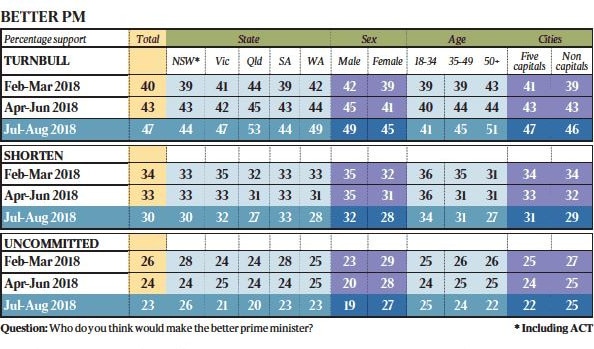
“I don’t comment on the polls when they’re bad and I don’t comment on them when they’re good but I don’t think any of us here needed an opinion poll to tell us how angry, confused and annoyed Australians are with the government, but (also) with politics more generally,” he said.
Mr Shorten was instrumental in bringing down Kevin Rudd in 2010 and restoring him in 2013 after knifing Julia Gillard.
Labor was accused of never explaining to the public why Mr Rudd was removed as prime minister and Mr Shorten said the Liberal Party now suffered the same fate.
“The Morrison government still hasn’t told us why Morrison is the Prime Minister,” he said.



